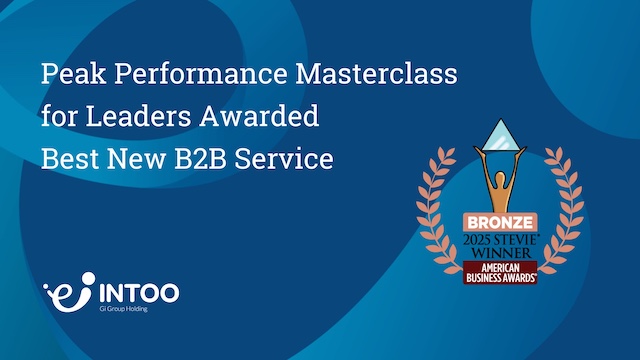Effective communication is characterized by clarity, relevance, and empathy. It involves choosing the right medium and tone for the message, considering the needs and perspectives of the audience, and actively listening to responses. Additionally, it requires being concise yet comprehensive, avoiding ambiguity, and promptly addressing potential misunderstandings. Beyond merely conveying information, effective communication ensures that the message is understood by the intended audience and elicits the desired response or action.
Effective communication is essential to successful interactions in any setting, however, in this article, we delve specifically into its impact in the workplace. In order to foster collaboration, boost productivity, and maintain a positive work culture, it’s vital to have strong communication skills.
Looking to build and advance your company’s culture? Download this guide for practical tips.
What Are the Benefits of Effective Communication in the Workplace?
Strong communication within a company has several key benefits for a business:
1. Smoother workflows
Clear communication ensures everyone is aligned on deadlines, expectations, and project details. It reduces confusion and creates efficiency and expedience.
2. Fewer errors
The ability to explain instructions and requests clearly leads to greater understanding and reduced errors. Also, an individual requiring clarification or support is more likely to get a helpful response when they can thoughtfully articulate their question or what they need to complete a task.
3. Enhanced innovation
When employees feel comfortable sharing ideas, the free flow of information allows diverse perspectives to be heard, leading to more innovative approaches. Effective communication creates a space for those ideas to be shared and implemented.
4. Better problem-solving
Conflict is reduced, and solutions are reached more easily when all involved can get across what they mean concisely, tactfully, and clearly. Whether resolving a personal issue or a work-related hiccup, carefully listening and imparting information can achieve a productive result more quickly and effectively.
5. Stronger teams and higher morale
Effective communication fosters trust and collaboration among colleagues. Team members who understand each other’s communication styles can support one another better. This camaraderie creates higher morale, increased engagement, and a more positive work environment.
6. Improved employee satisfaction and retention
Poor communication can lead to frustration, inefficiency, longer hours, and conflict between team members. When employees have the skills needed to convey instructions, requests, concerns, and appreciation and are heard by their peers, managers, and leadership, they are happier. When this satisfaction is widespread, an organization can experience better employee retention.
7. Greater customer satisfaction
Clear and consistent communication isn’t only important within an organization. For a company to be successful, strong communication must extend to interactions with clients as well. Those dealing with customers need to be able to communicate effectively no matter the method—by phone, videoconference, email, etc. In addition, when all departments are aligned on customer needs and expectations, it ensures a smooth and positive customer experience. This translates to higher customer satisfaction and loyalty, which is crucial for any business’s profitability and success.

11 Strategies for Effective Communication in 2024
Here are 11 strategies individuals can use for a more productive and happier workplace in 2024:
1. Be clear and concise
To communicate effectively in the workplace, it’s essential to structure your message thoughtfully. Begin by defining your objective and key points, ensuring they align with the recipient’s needs and understanding. Use straightforward language and avoid unnecessary jargon or technical terms that may obscure your meaning. Keep your sentences short and to the point, avoiding repetition or tangents that can dilute the message. If the recipient indicates that more information is needed to understand your meaning, you can elaborate with more detail, however, it’s best to begin with the essence of your message.
2. Master the art of active listening
Effective communication is a two-way street; good listening is just as important as speaking clearly. Actively listening shows respect to your team members and encourages them to share openly. This means giving them your full attention, both physically and mentally, by removing distractions (such as your phone) and making eye contact to show you’re engaged. As they speak, ask clarifying questions to ensure you understand their point of view. Don’t just listen to respond, but listen to comprehend. Finally, acknowledge their ideas and opinions, even if you disagree. Doing so builds trust and fosters a collaborative environment where everyone feels heard and valued and that encourages continued productive communication.
3. Learn to recognize and satisfy different communication styles
People have unique preferences for how they communicate and receive information. Some team members might be concise and prefer quick emails to get the job done. Others might thrive on face-to-face discussions where they can ask questions and get detailed explanations. Being mindful of these different communication styles demonstrates empathy and ensures everyone gets the information they need in a way they can understand. For instance, if you know a colleague who prefers a more visual approach, consider using charts or diagrams to explain a complex concept. By catering to their preferred styles, you can improve information retention and overall team efficiency.
4. Mind your body language and nonverbal cues
Communication is more than just the words you say; it’s also about how you say them. Nonverbal cues like body language and facial expressions can substantially impact how your message is received. Maintaining eye contact with your audience elicits attentiveness and engagement. Projecting confidence through good posture conveys authority and inspires trust. You can create a positive and professional workplace communication style that reinforces your spoken words when you are mindful of your nonverbal cues.
5. Pay attention to your voice’s tone, speed, and pitch
Ensuring your tone aligns with your intended message is crucial. An enthusiastic tone can elevate a positive message, while a deliberate tone might be warranted for delivering constructive criticism. Similarly, the pitch of your voice can affect how what you say is interpreted and how seriously it’s received. Even the speed with which you speak can impact your messaging and how well it’s understood. Note how saying the same thing in different ways can vary its meaning and find the right tone and emphasis to convey your intended message.
6. Practice empathy
Understanding the emotions and perspectives of others is crucial for effective communication. When someone is sharing their perspective or concern, listen and acknowledge their feelings and point of view. Ask open-ended questions to gain a deeper understanding. By practicing empathy and emotional intelligence, you can strengthen relationships and contribute to a more positive work environment.
7. Give context
When conveying information, it’s important to give context that allows the listener to fully understand your perspective and meaning. For example, explain the situation, including the “who,” “what,” “where,” and “when,” to ensure the reasoning surrounding your message is clear. Providing examples can also provide context supporting your intention.
8. Ask thoughtful questions and respond carefully
As a listener, it’s important to be sure you understand the speaker before responding so that the communication is productive. Ask thoughtful, open-ended questions to delve deeper to help you learn whatever details are necessary for you to respond carefully. Once you believe you are clear on the speaker’s intent, construct a concise response that is objective.
9. Develop presentation skills
Giving presentations is a crucial business skill. Using practiced communication methods to deliver your content will help you create optimal impact and outcomes. Both your visual tools and verbal presentation should be clear and tailored to your audience. Make sure that your presentation visuals and the language you use will be understood by your audience. Use fonts and text sizes that can be easily read, and leverage familiar terminology. Pace the presentation well so that those in attendance can absorb the information. Employ the other communication skills mentioned in this article to boost the audience’s comprehension of your subject matter.
10. Leverage the right communication channels
The most effective communication tool depends on your message’s urgency, complexity, and intended audience. A quick team chat notification might be the best option for urgent announcements requiring immediate attention. Conversely, complex project details that involve discussions, explanations, and back-and-forth exchanges might be best tackled in a videoconference format. Utilizing a variety of communication channels allows you to tailor your approach to the specific situation.
Generally, emails are good for sending information that needs to be documented or referred back to later, like meeting minutes or project updates. Instant messaging platforms are useful for quick questions, updates, or brainstorming sessions. Project management tools can be a central hub for storing documents, assigning tasks, and keeping track of project progress.
11. Invest in communication skills training
Investing in communication skills training for yourself or your team members demonstrates a commitment to the well-being of your team and overall organizational success. Structured, interactive group training programs can offer participants the opportunity to practice skills in breakout sessions as they learn them, as well as through homework assignments that reinforce classroom lessons. By investing in communication skills training, you empower employees to communicate more effectively at all levels, fostering collaboration across departments, boosting project success rates, and contributing to a strong and positive company culture.
Help your employees take charge of their careers. Download these tips to make career development conversations more meaningful.
Conclusion
Effective communication fuels productivity, strengthens teams, minimizes conflict, boosts engagement, and ignites innovation. By improving your own and your team’s communication skills using the strategies mentioned in this article, your organization will benefit from a happier workforce and better performance.
Interested in training to strengthen your or your employees’ communication skills? INTOO offers highly interactive leadership development and training programs for any organization that will create immediate results. Contact us today to learn more.











